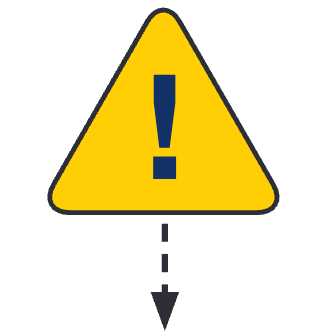CLEANER CHEMISTRY
Advance cleaner chemistry across our supply chain.
Chemistry is the foundation of our materials
We recognize that it must be effectively and responsibly managed to maximize its value and minimize risks. We use a chemical prioritization strategy that integrates our approach to regulatory compliance with proactive efforts to scale cleaner chemistry and integrate chemistry into our business as points of innovation, opportunity and efficiency. Through the adoption of cleaner chemistries, we aim to reduce the overall environmental impact of our chemical footprint by carefully selecting chemicals that align to Nike’s internal standards and industry aligned commitments.

4,000+ CHEMICALS IN THE NIKE SUPPLY CHAIN
In Nike’s supply chain, there are more than 4,000 chemicals potentially in use in a wide number of formulations.

CHEMICAL HAZARDS
Nike performs chemical assessments to review incoming chemistries against many different criteria. Continuous improvement of processes and materials drives the use of cleaner chemistries.

CHEMICALS ON THE NIKE RSL
The Nike Restricted Substances List (RSL) restricts hundreds of chemicals that have been regulated or voluntarily phased out of our manufacturing processes. These chemistries are tightly controlled to minimize their use in the supply chain.
Chemistry Management Expectations
Chemicals must be managed properly Nike's
Code of Conduct (COC) and
Code Leadership Standards (CLS)
NIKE RSL
Global regulatory requirements and Nike's voluntary restrictions on chemicals Nike Chemistry Playbook & Restricted Substances List (RSL)
ZDHC MRSL
List of chemical substances banned from intentional use
ZDHC Manufacturing Restricted Substance List (MRSL)
Higg FEM
Responsible chemical management guide
Higg Facility Environmental Module (Higg FEM)
Chemistry Management Expectations
A variety of other tools are available to help suppliers understand and procure cleaner formulations.
This is an independent certification system for chemicals, colourants and auxiliaries used in the textile and leather industry.
Bluesign® certified chemical formulations are an excellent resource for textile suppliers. These chemical formulation also meet ZDHC MRSL requirements. Nike suppliers are encouraged to use this database in their procurement practices.
This subscription-based third-party service screens formulations against toxicological endpoints to identify potential issues and find safer alternatives.
ToxServices Full Material Disclosure (ToxFMD®) Screened Chemistry® program helps evaluate chemical formulations and conduct product stewardship audits to eliminate chemicals of concern.
